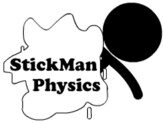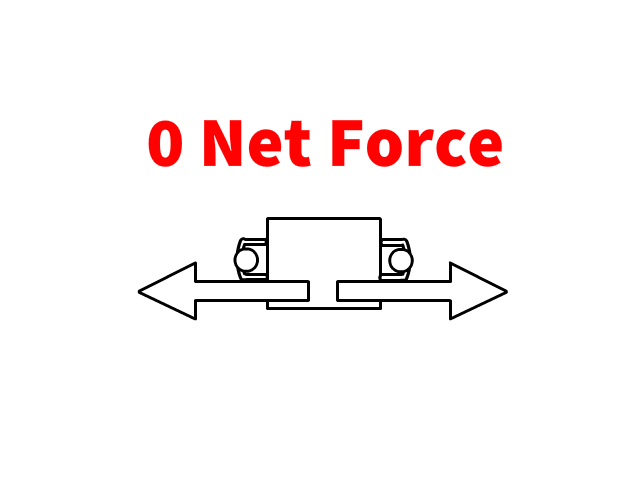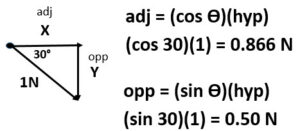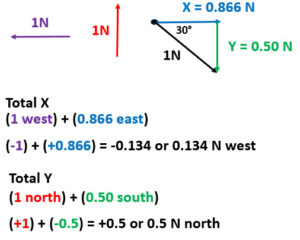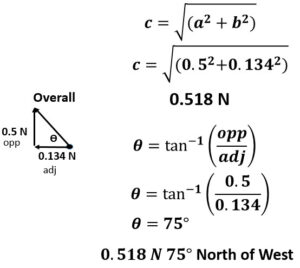Newtons Second Law of Motion: Net Force Causes Acceleration
Newton’s Second Law of Motion: (Fnet = ma)
A net force on an object cause it to accelerate in the direction of that net force. Force is a vector, having magnitude and a direction.
Learning Targets
- I understand what force is
- I can determine net force
- I can draw a force diagram
- I can solve (Fnet = ma) problems
- I can solve problems with (Fnet = ma) and acceleration equations combined
What is a force?
- A force is any push or pull
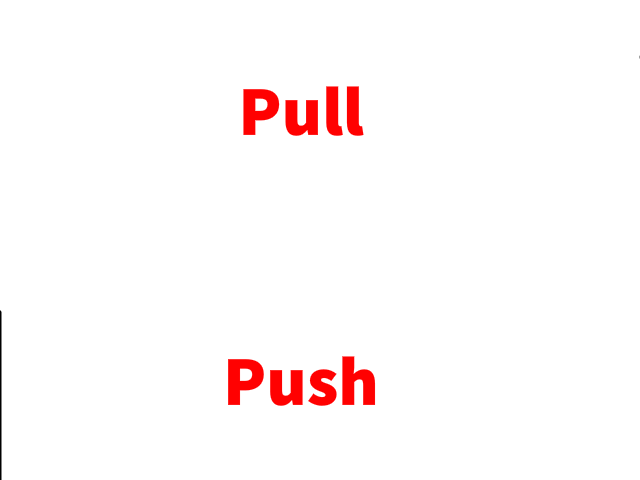
The Unit of Force is the Newton
Mass
- The kilogram (kg) is the unit of mass in physics
- This is a measure of the matter in an object
Acceleration
- Meters per second squared (m/s2) is the unit of acceleration
- This is a measure of how much faster an object will move every second in a direction
Force
- A Newton (N) is derived from kilograms times meters per second squared (kg ∙ m/s2)
- One Newton is the force required to accelerate one kilogram of mass by one meter per second squared
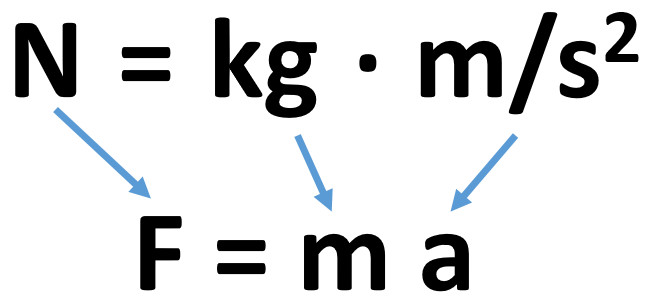
Deriving a Newton
Acceleration is Directly Related to Net Force
Acceleration is directly related to force
- When force goes up acceleration goes up
- Notice that acceleration doubles when force doubles
Acceleration is inversely related to mass
- When mass goes up acceleration goes down
- Notice that doubling mass halves acceleration
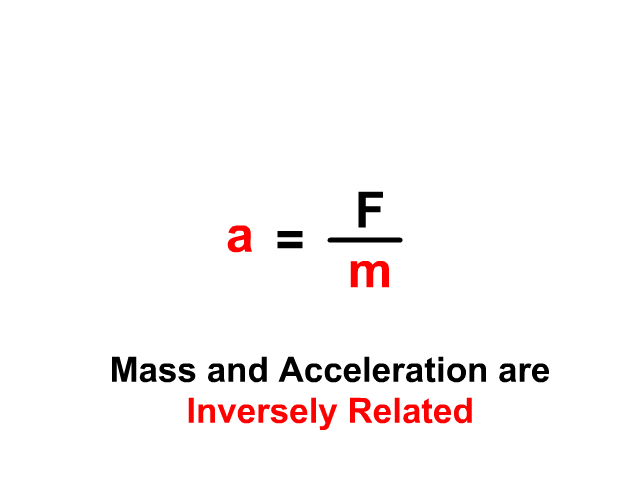
Force Diagram
- A force diagram is a list of all the forces represented by arrows on an object
- Both pushes and pulls are drawn from the center of the object outward
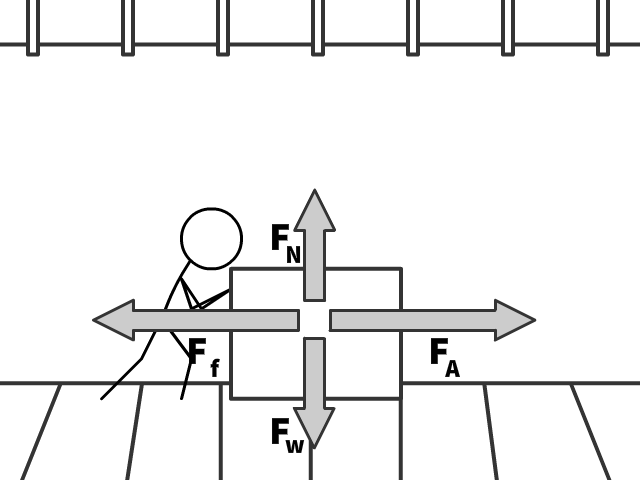
Force Diagram Example
- This person is applying a force (FA)
- Friction (Ff) is pushing back on the box
- Weight (FW) is pushing down
- Normal force (FN)is pushing up
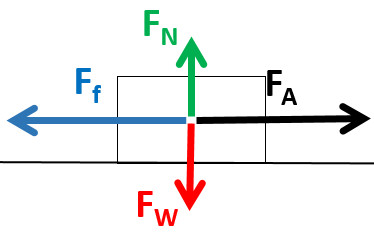
Free Body Diagram Example
- Like a force diagram showing forces on an object
- But the object is represented by a dot
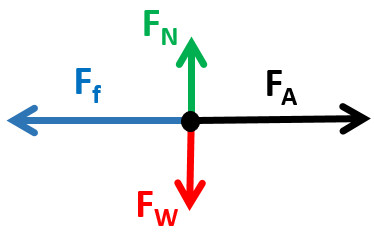
Weight and Normal Force
- Weight (FW) force of earth attracting the object
- Normal force (FN) the force of the a surface pushing back against weight
- Without Normal force pushing back up an object would accelerate at 10 m/s2 to the ground
Notice in the animation, when a normal force is present from either the surface of the table or ground, the object stays in static equilibrium. There is no net force since normal force opposes the weight of the object.
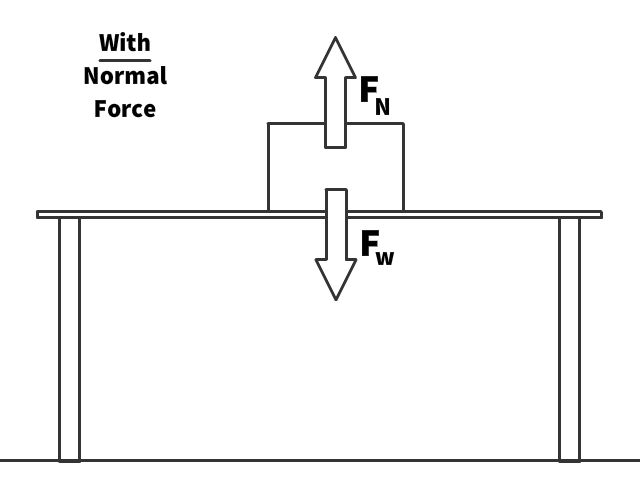
What is a net force?
- The overall force causes by one or many forces
- An object will accelerate when there is a nonzero net force
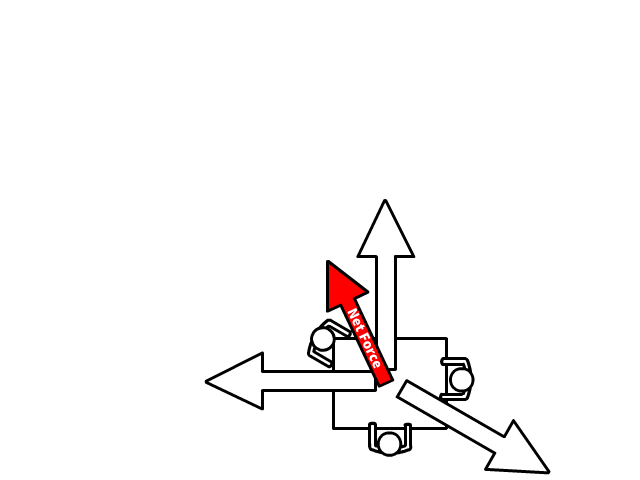
Q1: What is the magnitude of net force when a person pushes a box with 1N of force to the west?
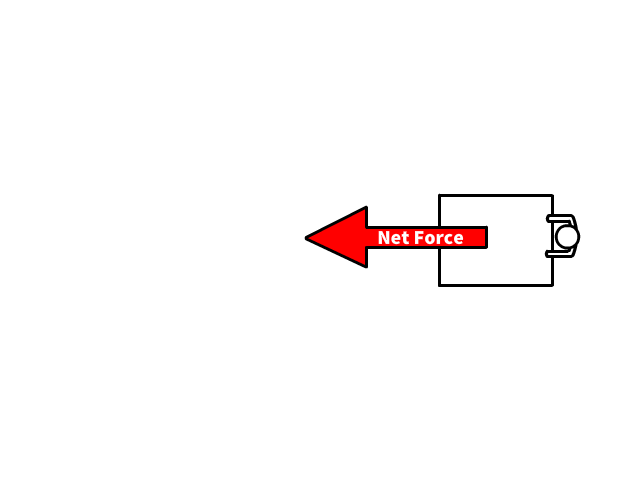

Q2: What is the magnitude of net force when two people push a box with 1N of force to the west?
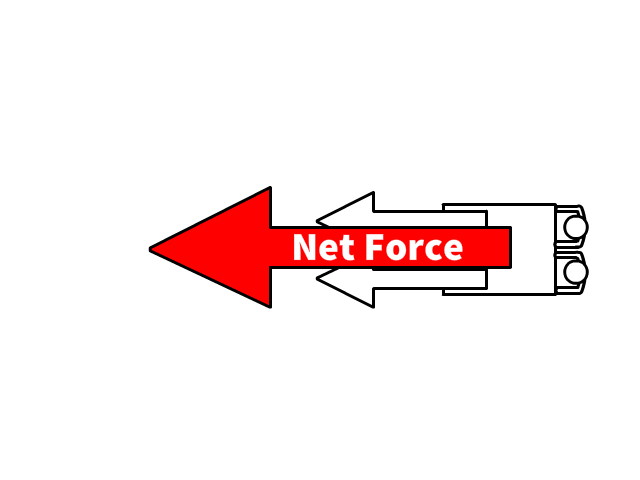

Q3: What is the magnitude of net force when one person pushes a box with 1N of force to the west and another one with 1N of force east?
Q4: What is the magnitude of net force when one person pushes a box with 1N of force to the west and another one with 1N of force north?
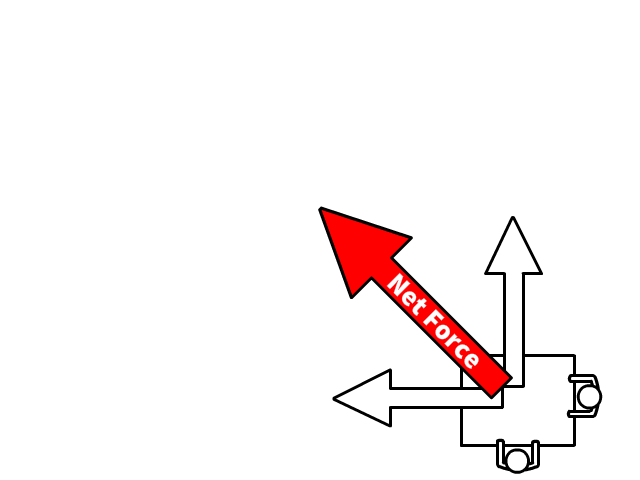

Q5: What is the net force when one person pushes a box with 1N of force to the west, another one pushes with 1N of force to the north, and a third pushes with 1N of force 30° South of East?



Q6: What is the net force in the diagram?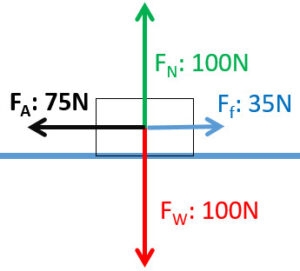

Force and Acceleration Equation Variables
| Name | Variable | Unit | Unit Abbreviation |
| Force | F | Newton | N |
| Mass | m | kilogram | kg |
| Initial Velocity or Initial Speed | vi | meters per second | m/s |
| Final Velocity or Final Speed | vf | meters per second | m/s |
| Time | t | seconds | s |
| Acceleration | a | meters per second squared | m/s2 |
| Displacement or Distance | X | meters | m |
Problems Involving Newtons Second Law: Force and the One Dimensional Motion Equation
Problems involving the net force equation (Fnet = ma) often tie into one dimensional motion problems. Notice in the picture to the right that you may have force and mass to solve for acceleration. Later you may use this to find the final velocity or another unknown seen in the left side of the picture.
You may also have to start with the equations on the left. Later you may use those to find a mass or net force causing that acceleration.
Making a givens list will help you determine how to proceed in a problem.
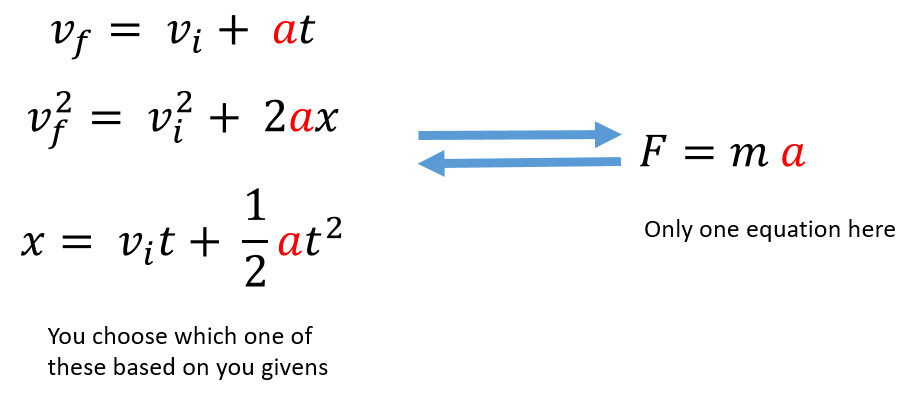

Fnet Questions:
Q7: What is the force required to accelerate a 10 kg object by 3 m/s2?
Q8: What is the force required to accelerate a 50 kg object by 3m/s2?
Q9: Which of the objects have more inertia and why? A 10 kg object or 50 kg object
Q10: A constant forward net force of 1000 N is applied to car with a total mass of 1500 kg. How much faster will the motorcycle be travelling after 4 seconds?
Q11: How much force is required by the breaks to stop a 1000 kg car moving at 30 m/s in 5 seconds?
Q12: What is the final velocity of a 1200 kilogram car starting from rest after 50 meters when 4500 Newton’s of force is applied?
Q13: How fast is a 10 kg box going to be moving from rest after 3 seconds if a 200 N force is applied to the left and a 50 N force is applied to the right?
Example Problem (Force Applied at an Angle)
When force is applied at an angle, only the force component in the direction of motion will directly accelerate the object. The horizontal component, the adjacent side of the triangle to the right, will accelerate the 5 kg mass.
Example: How much would a 5 kg box accelerate when a 75 N force is applied 25° above the horizon on the right side?
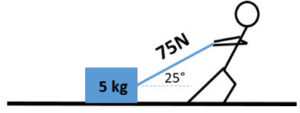

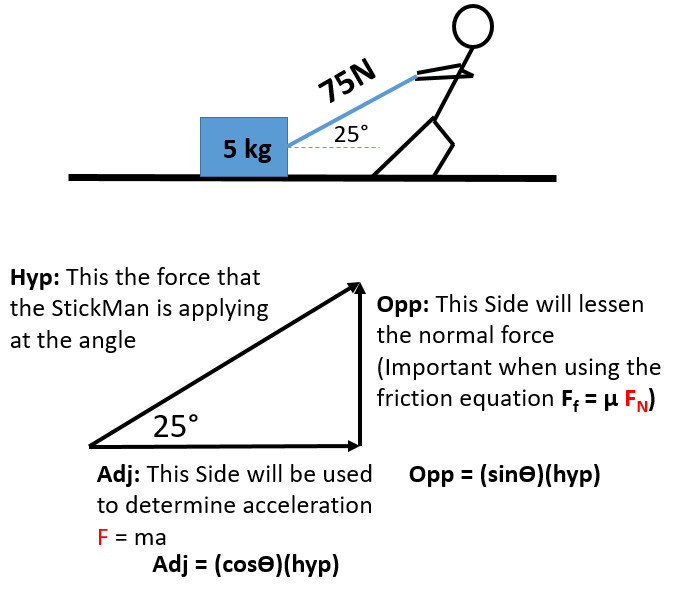

Q14. Sara pulls a 45 kilogram wagon with a force of 200 Newtons at a 25° angle to the horizontal from rest. How fast will the wagon be moving after 3 seconds?
Links
- Continue to the F=ma Practice Problems
- Back to the Main Forces Page
- Back to the Stickman Physics Home Page
- Equation Sheet
